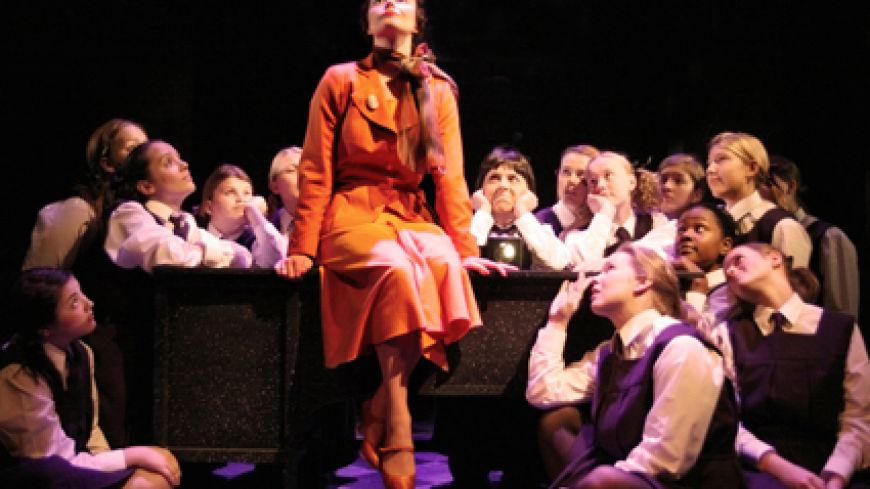
The vast space of the Assembly Hall with its high rafters and apron stage, is the ideal theatre to stage this majestic production, set as it is in classrooms, art studio, music room, and assembly hall of the Marcia Blane school for Girls. Muriel Spark's inimitable portrait of Jean Brodie, the unconventional, egocentric school mistress was based on her own happy Edinburgh school days in the early 1930s and her inspirational teacher Christina Kay.
With a small army of schoolgirl extras, charging down the theatre aisles on to the stage, we are thrown into the rush and tumble of daily life at school, with singing and art classes, ringing bells and blackboards. Miss Brodie ignores the school curriculum preferring to share her holiday photographs of Roman sites and Giotto paintings and impart her love of Italy and art on her young pupils. In history lessons, she tells the tragic tale of the loss of her fiancé Hugh, killed on Flanders Field. "I am putting old heads on your young shoulders ... and all my pupils are the crème de la crème."
From her first entrance, Anna Francolini is the epitome of Jean Brodie: fashionably elegant, slim, serious, proud, with a soft precise educated Edinburgh accent. (All memories of a more comical Maggie Smith in the 1969 film version are quickly gone.) Several priceless scenes are with Miss Mackay, the headmistress - "such stimulating colours!" she retorts, appalled by Brodie's vivid orange dress, and challenging her "spirit of precocity" - to which Brodie replies "thank you," taking this as a compliment. These witty exchanges create an initial light hearted mood, before the dramatic twists and turns and character assassination to follow.
Amongst her pupils are four favourite girls, Sandy, Jenny, Mary and Monica, the Brodie set, whom she takes under her nurturing wing to take to the ballet, art galleries and Sunday walks at Cramond. The setting and mood of each scene is realistic from authentic period clothes to a picnic with sandwiches and cake. On the onset of puberty, the girls idolise Miss Brodie - sitting at her feet in awe as she recites the Lady of Shalott, and romanticising her love life.
But as the years pass they mature into adolescence. Her "dependable" Sandy is jealous of the beautiful Jenny "who will be famous for sex", while the quiet, naïve Mary is at an impressionable age: inclined to think of herself as European, Miss Brodie openly praises fascism to the girls, her belief in autocratic politics as a part of her cultivated and artistic mind.
With the Brodie Set no longer her reliable, loyal accomplices on one side, and upright Presbyterian Miss Mackay on the other, Miss Jean Brodie stands centre stage dressed in striking Germanic red, black and white. The final denouement, proclaiming her passionate dedication to teaching, while having to acknowledge betrayal by one of her girls, is a breathtaking scene, sending shivers up the spine.
"It's only possible to betray where loyalty is due," says Sandy. "Well wasn't it due to Miss Brodie?" says Monica. "Only up to a point" replies Sandy.
Times: 6-31 August, 12noon (no show 17 and 24).

